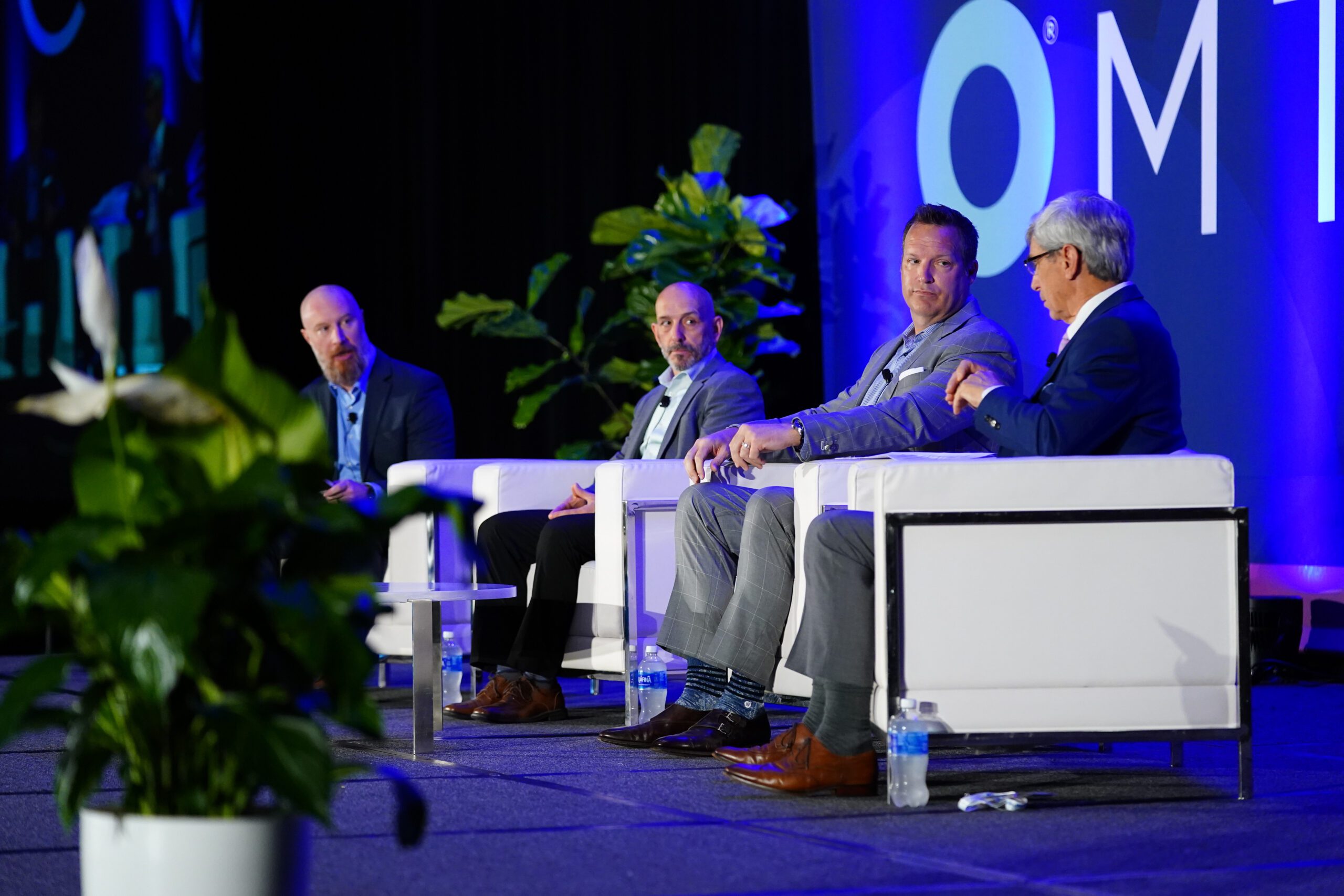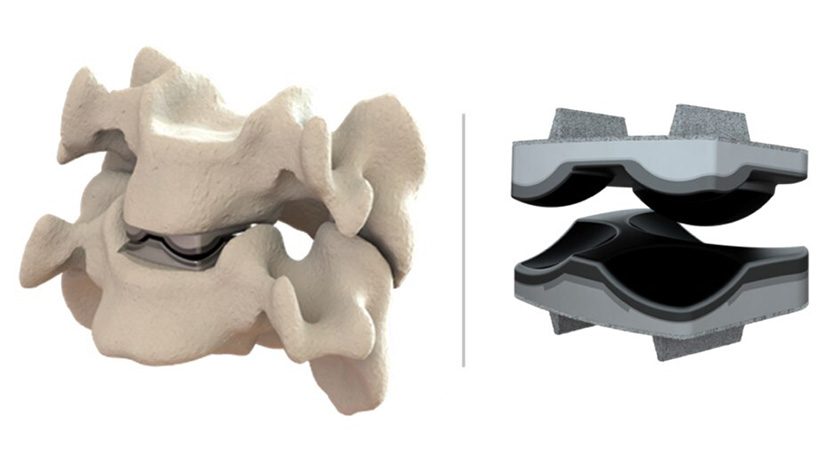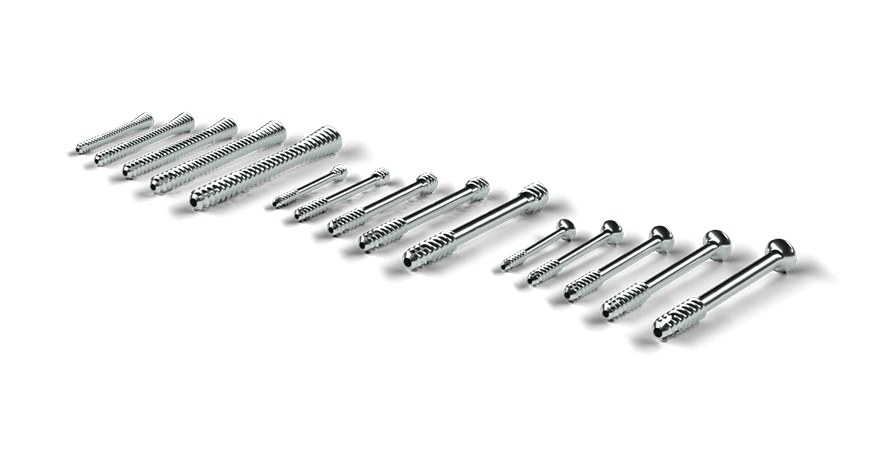

 Copy to clipboard
Copy to clipboard 
Our keynote panel for OMTEC 2025 featured a trio of industry leaders who had experience on both the device company and contract manufacturer sides. The panelists were:
- Jeff Sears, Chief Operations Officer, Highridge Medical
- Nate Folkert, Chief Executive Officer, Orchid Orthopedic Solutions
- Dave Pelizzon, Founder, Squadron Capital
Below are excerpts from the discussion, covering market conditions, ways to improve communication among stakeholders, the scarcity of skilled tradespeople in the United States and their five-year outlook for the market.
A Tumultuous Market
The panelists agreed that the orthopedic market has been heavily disrupted over the last five years, especially in the spine segment given the significant divestitures from Zimmer Biomet and Stryker, as well as ongoing consolidation. While that may be positive for a company like Highridge that is in a growth cycle, it’s been a punishing rollercoaster for contract manufacturers.
“I think I picked the wrong time to join the [contract manufacturer] industry,” joked Nate Folkert. “I joined about four and a half years ago, with COVID, supply chain challenges, hiring challenges, inflation, ramping up to meet demand and then ramping down because of inventory de-stocking.”
Coming out of five years of disruption, there is a sentiment (or maybe a hope) that global supply chains have become more resilient as a result. Our panelists unanimously pushed back on that idea, however.
Mr. Folkert said he hasn’t seen anything really change since the pandemic and expects similar disruptions could arise out of the tariff environment. Dave Pelizzon believes global supply chains remain very fragile.
“I think the people in this room have become more resilient,” said Jeff Sears. “I know that I am. I mean, you deal with a 100-year pandemic and things that you never thought you’d be having to worry about. Whether that boat’s coming or it takes, instead of eight weeks from China, it takes infinity. We’ve all become more resilient.”
Fostering Collaboration between OEMs and CMs
Mr. Sears said his current and former companies used contract manufacturers almost exclusively. A significant portion of device companies do. He said that it creates a barrier to more effective communication and collaboration between the entities when it comes to ordering.
“What’s trained inside the OEM is that we basically behave like purchasing people. We just issue and chase purchase orders. We have forgotten what it actually means to make a screw plate,” he said.
Mr. Sears said that OEMs should send their purchasing people out to the manufacturer’s facilities and work in the planning shop to better understand the planning horizon and lead times.
“I would add that I am really shocked how poor inventory management is across the industry,” said Dave Pelizzon. “Last year, we got whipsawed at one of my companies because an OEM found millions and millions of dollars’ worth of usable inventory. I would tell you inventory systems are very weak throughout the industry and cause fluctuating orders from OEMs.”
Mr. Folkert agreed that more visibility is key, but contract manufacturers are challenged by having shed a significant portion of their workforce over the last 18 months, as OEMs work down excess inventory. “These people don’t grow on trees. If you come back and say my third quarter forecast has doubled… I can’t do it. The more visibility we have, the better,” he said.
Reinvesting in Skilled Trades
A common theme during the panel discussion was the scarcity of skilled trade labor available to contract manufacturers in the United States.
“So first, it’s a cultural thing,” said Mr. Pelizzon. “For many years, if you didn’t go to college in many places, you were seen as a second-class citizen. So you went to college, and you then took a lot of debt and ended up in a career doing something unrelated to anything you learned in college. I’m not belittling that kind of education, but we need to get back to a high level of skilled trades education. We spend 6% of our GDP on education, but we need to break it down further. What percentage do we spend on trades education? I bet it’s fractional.”
Mr. Folkert said Orchid partners with technical schools near its Alabama and Michigan facilities. By supplying and funding these schools, companies can get a steady stream of skilled job candidates in the same way traditional companies take on interns.
Five-Year Outlook
Mr. Sears’ experience in the spine market leads him to believe that conglomerates like Stryker could continue to divest specialty orthopedics. We’ve seen several examples in recent years of large strategics acquiring innovative technologies, but ultimately not being able to figure out how to leverage them at scale and then cutting them loose again. He also said he could see more consolidation happening among contract manufacturers with the involvement of private equity firms.
Given labor shortages in the manufacturing sector, Mr. Pelizzon believes more sophisticated automation is crucial to increasing capacity and reducing costs. Additionally, he said artificial intelligence is crucial to speeding up the development of complex programs and sees information-centric procedures as increasingly important in surgery.
Despite the last five years of disruption, Mr. Folkert sees medtech as one of the best industries to be in over the next five years. He said he expects the industry to return to stable, mid-single-digit growth and to be bolstered by emerging technologies in spine and extremities, particular foot and ankle as well as shoulder.
“When I got out of the military 25 years ago, I landed in medtech almost by accident,” he said. “But I think it’s the best industry in the world to be in. We survived the last five years of chaos. I think the next five years are going to be fantastic.”
Our keynote panel for OMTEC 2025 featured a trio of industry leaders who had experience on both the device company and contract manufacturer sides. The panelists were:
Jeff Sears, Chief Operations Officer, Highridge Medical
Nate Folkert, Chief Executive Officer, Orchid Orthopedic Solutions
Dave Pelizzon, Founder, Squadron...
Our keynote panel for OMTEC 2025 featured a trio of industry leaders who had experience on both the device company and contract manufacturer sides. The panelists were:
- Jeff Sears, Chief Operations Officer, Highridge Medical
- Nate Folkert, Chief Executive Officer, Orchid Orthopedic Solutions
- Dave Pelizzon, Founder, Squadron Capital
Below are excerpts from the discussion, covering market conditions, ways to improve communication among stakeholders, the scarcity of skilled tradespeople in the United States and their five-year outlook for the market.
A Tumultuous Market
The panelists agreed that the orthopedic market has been heavily disrupted over the last five years, especially in the spine segment given the significant divestitures from Zimmer Biomet and Stryker, as well as ongoing consolidation. While that may be positive for a company like Highridge that is in a growth cycle, it’s been a punishing rollercoaster for contract manufacturers.
“I think I picked the wrong time to join the [contract manufacturer] industry,” joked Nate Folkert. “I joined about four and a half years ago, with COVID, supply chain challenges, hiring challenges, inflation, ramping up to meet demand and then ramping down because of inventory de-stocking.”
Coming out of five years of disruption, there is a sentiment (or maybe a hope) that global supply chains have become more resilient as a result. Our panelists unanimously pushed back on that idea, however.
Mr. Folkert said he hasn’t seen anything really change since the pandemic and expects similar disruptions could arise out of the tariff environment. Dave Pelizzon believes global supply chains remain very fragile.
“I think the people in this room have become more resilient,” said Jeff Sears. “I know that I am. I mean, you deal with a 100-year pandemic and things that you never thought you’d be having to worry about. Whether that boat’s coming or it takes, instead of eight weeks from China, it takes infinity. We’ve all become more resilient.”
Fostering Collaboration between OEMs and CMs
Mr. Sears said his current and former companies used contract manufacturers almost exclusively. A significant portion of device companies do. He said that it creates a barrier to more effective communication and collaboration between the entities when it comes to ordering.
“What’s trained inside the OEM is that we basically behave like purchasing people. We just issue and chase purchase orders. We have forgotten what it actually means to make a screw plate,” he said.
Mr. Sears said that OEMs should send their purchasing people out to the manufacturer’s facilities and work in the planning shop to better understand the planning horizon and lead times.
“I would add that I am really shocked how poor inventory management is across the industry,” said Dave Pelizzon. “Last year, we got whipsawed at one of my companies because an OEM found millions and millions of dollars’ worth of usable inventory. I would tell you inventory systems are very weak throughout the industry and cause fluctuating orders from OEMs.”
Mr. Folkert agreed that more visibility is key, but contract manufacturers are challenged by having shed a significant portion of their workforce over the last 18 months, as OEMs work down excess inventory. “These people don’t grow on trees. If you come back and say my third quarter forecast has doubled… I can’t do it. The more visibility we have, the better,” he said.
Reinvesting in Skilled Trades
A common theme during the panel discussion was the scarcity of skilled trade labor available to contract manufacturers in the United States.
“So first, it’s a cultural thing,” said Mr. Pelizzon. “For many years, if you didn’t go to college in many places, you were seen as a second-class citizen. So you went to college, and you then took a lot of debt and ended up in a career doing something unrelated to anything you learned in college. I’m not belittling that kind of education, but we need to get back to a high level of skilled trades education. We spend 6% of our GDP on education, but we need to break it down further. What percentage do we spend on trades education? I bet it’s fractional.”
Mr. Folkert said Orchid partners with technical schools near its Alabama and Michigan facilities. By supplying and funding these schools, companies can get a steady stream of skilled job candidates in the same way traditional companies take on interns.
Five-Year Outlook
Mr. Sears’ experience in the spine market leads him to believe that conglomerates like Stryker could continue to divest specialty orthopedics. We’ve seen several examples in recent years of large strategics acquiring innovative technologies, but ultimately not being able to figure out how to leverage them at scale and then cutting them loose again. He also said he could see more consolidation happening among contract manufacturers with the involvement of private equity firms.
Given labor shortages in the manufacturing sector, Mr. Pelizzon believes more sophisticated automation is crucial to increasing capacity and reducing costs. Additionally, he said artificial intelligence is crucial to speeding up the development of complex programs and sees information-centric procedures as increasingly important in surgery.
Despite the last five years of disruption, Mr. Folkert sees medtech as one of the best industries to be in over the next five years. He said he expects the industry to return to stable, mid-single-digit growth and to be bolstered by emerging technologies in spine and extremities, particular foot and ankle as well as shoulder.
“When I got out of the military 25 years ago, I landed in medtech almost by accident,” he said. “But I think it’s the best industry in the world to be in. We survived the last five years of chaos. I think the next five years are going to be fantastic.”

You’ve reached your limit.
We’re glad you’re finding value in our content — and we’d love for you to keep going.
Subscribe now for unlimited access to orthopedic business intelligence.
ME
Mike Evers is a Senior Market Analyst and writer with over 15 years of experience in the medical industry, spanning cardiac rhythm management, ER coding and billing, and orthopedics. He joined ORTHOWORLD in 2018, where he provides market analysis and editorial coverage.






